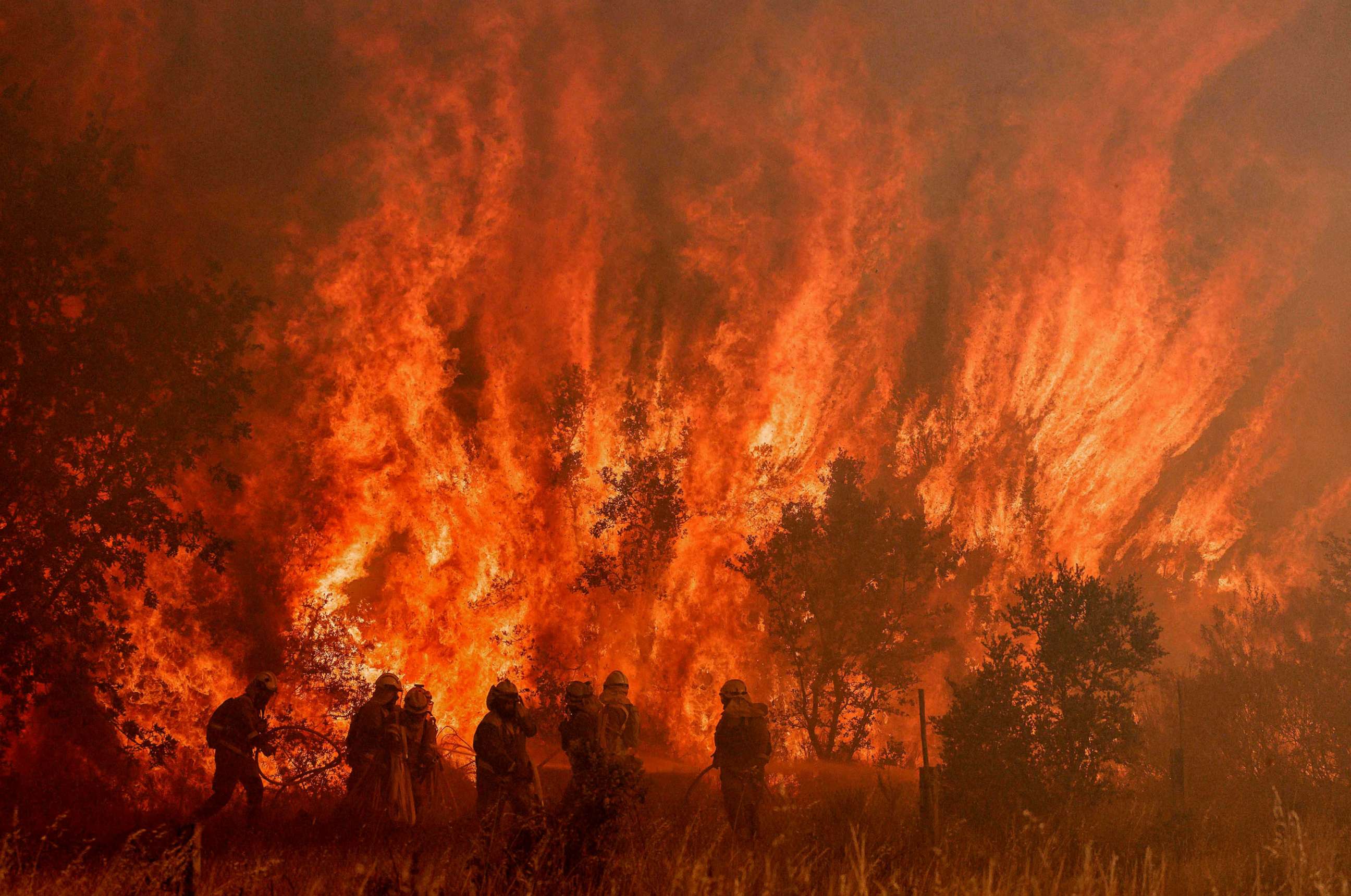2022 was 5th-warmest year on record and had 3rd most billion-dollar disasters, scientists say
If there is any indication that temperatures around the world are rising, look to the last several years and the intense warmth experienced in almost every region, experts said.
Last year was the fifth-warmest year on record, according to a report released by the European Union's Copernicus Climate Change Service on Tuesday.
On July 19, in the midst of a deadly heat wave in Europe, the temperature in Coningsby, U.K., soared to 104.5 degrees Fahrenheit, marking the hottest temperature ever recorded in the country. It bested its previous record by 2.8 degrees Fahrenheit -- a glaring indicator of climate change amid a summer that went down as Europe's warmest ever recorded, the report said.
In the new report issued by Copernicus, the data from 2022 indicates that Earth's warming continued at a similar rate to recent years. In addition to last year's temperatures marking the fifth-warmest on record, the last eight years are now also the eighth-warmest on record, according to Copernicus.
The same day the Copernicus global report was released, the National Oceanic and Atmospheric Administration issued its annual summary of 2022 climate statistics and natural disasters for the United States. The results tell a similar story: the warming and extreme consequences due to human-induced climate change are continuing at a concerning rate.

A year of global highs and lows
Vostok Station in Antarctica recorded a temperature of .14 degrees Fahrenheit in March 2022, marking the first time in 65 years of records that the thermometer did not have a negative reading. Antarctic sea ice reported six months of the year with a record or near-record low sea ice extent.
In addition to Europe's record-setting summer scorcher, there were also major heat waves in Pakistan, India and China. While rain brought relief from the heat in Pakistan, extreme rainfall led to devastating flooding throughout the country that continues to be cleaned up months later.
"2022 was yet another year of climate extremes across Europe and globally," Samantha Burgess, deputy director of the Copernicus Climate Change Service, said in a statement. "These events highlight that we are already experiencing the devastating consequences of our warming world. The latest 2022 Climate Highlights from C3S provides clear evidence that avoiding the worst consequences will require society to both urgently reduce carbon emissions and swiftly adapt to the changing climate."
Last year was also a tough 12 months for glaciers. According to the World Meteorological Organization, 2022 "took an exceptionally heavy toll on glaciers in the European Alps, with initial indications of record-shattering melt."
Greenland's ice sheet also saw significant melting, with September setting records for high temperatures, melt extent and ice loss.
"The total amount of meltwater produced during the month was 57 billion tons, a record for September, compared to the 1981 to 2010 average September total of 9 billion tons," according to the National Snow and Ice Data Center.
A weather station at Greenland's summit -- more than 10,000 feet in elevation -- reported rain for the first time in its 72-year history. The temperature stayed above freezing for nine hours as observers noted heavy rain falling on the normally frozen landscape.

Greenhouse gas emissions continue to rise
Carbon dioxide levels continued their yearly rise by 2.1 parts per million in 2022, according to the Copernicus report. That brings the annual average CO2 level to 417ppm, the highest in over 2 million years.
Methane, another key gas that contributes to global warming, rose by 12 parts per billion to a total of 1,894 ppb.
Both carbon dioxide and methane levels in 2022 set new records for emissions, which makes it challenging for countries to meet goals established by the Paris Climate Agreement, which aims to limit global warming to 1.5 degrees Celsius.
"Greenhouse gases, including carbon dioxide and methane, are the main drivers of climate change and we can see from our monitoring activities that atmospheric concentrations are continuing to rise with no signs of slowing," Vincent-Henri Peuch, director of the Copernicus Atmosphere Monitoring Service, said in a statement.

Billion-dollar disasters
NOAA's report highlights 18 disasters in 2022 that cost more than $1 billion, the third most since 1980. Only 2021 and 2020 had more billion-dollar disasters in a single year.
"I think it's important for everybody to realize we're already paying the price for climate change," Dr. Rick Spinrad, NOAA administrator and under secretary of commerce for Oceans and Atmosphere, told ABC News. "It's manifesting $165 billion worth of damage, which roughly translates to about a thousand dollars per American household."
When adjusted for inflation, 2022 was also the third costliest year on record for natural disasters. The only other years that cost the country more were 2005, when Hurricane Katrina struck the New Orleans area, and 2017, which saw Hurricane Harvey devastated the Houston metro area.
Looking ahead to 2023, NOAA expects to see similar trends for natural disasters, especially when it comes to severity, magnitude and frequency of events, but people and communities can be better prepared to mitigate the threats.
"Know your risks," Spinrad said, "Know what you might be facing...and know where to get information." Having reliable forecasts, warnings, and safety information is key to preparing for an effective plan in the event of extreme weather.
Spinrad continued, "That plan may be under the seat. Or the plan could be to shelter in place, in which case you want to make sure you've got emergency supplies to take care of yourself."
ABC News' Julia Jacobo contributed to this report.




